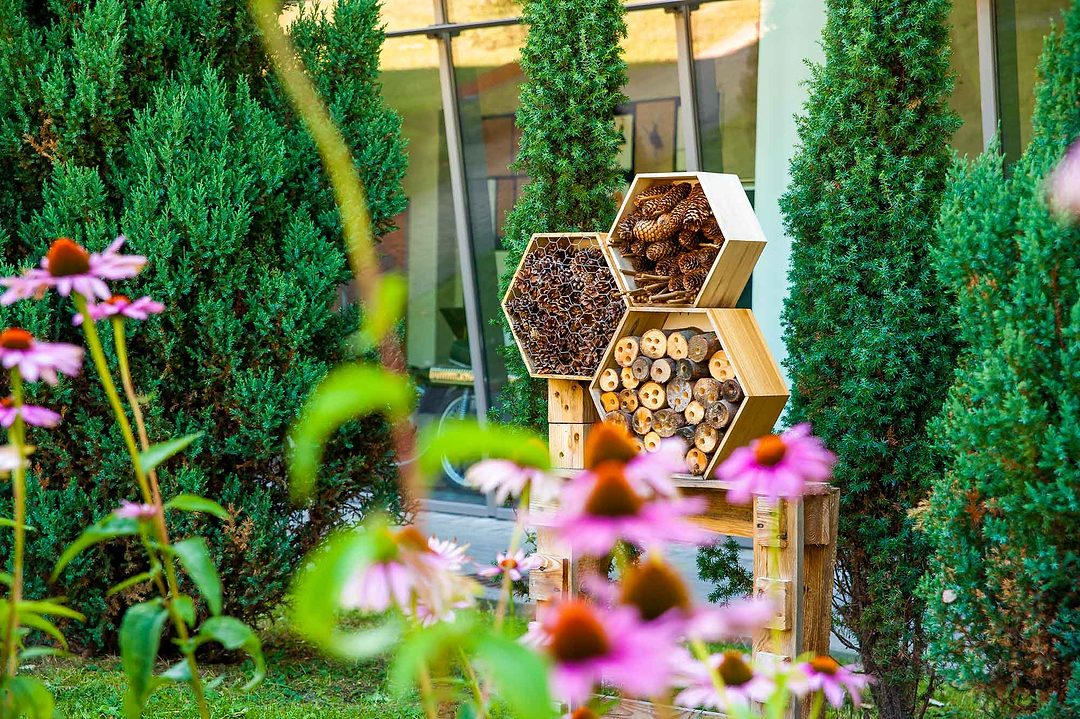Do you love a beautiful butterfly, a busy honeybee, or an adorable ladybug? What about a spider, or a tiny wasp, or a ground beetle with its snapping jaws? They may look scary, but they won’t hurt you and are important players in your backyard garden.

A hoverfly finds lunch
| ©istock.com/viktorkunz
An average garden can accommodate more than 2,000 different species of insect! Only about one to three percent of those insects are pests that are going to eat your veggies or nibble on your prize roses. The rest will help keep troublesome insects in check. So why not welcome them to your garden by building them a bug hotel? Whether it’s a modest little inn or the Ritz Carlton of bug domiciles, they will appreciate your care – and you’ll learn a lot about these important insects.

A single dahlia, perfect for pollinators
| ©istock.com/Martin Wahlborg
Start by finding a nice level spot near some shrubs, a wall, or another type of protection. Some insects like a cool, damp place and some prefer a warm, sunny room, so place your hotel where it gets some sun and some shade if possible.
Your bug hotel can be as simple or as complex as you’d like. There are hundreds of examples online and most are easy to build. The key is to provide a variety of habitats to attract a wide range of beneficial insects. You can use salvaged and natural materials such as sticks, straw, pine cones, dead grass, bricks, used pallets, old pieces of wood, and more to create different types of nesting places.

A classic insect house
| ©istock.com/wjarek
So, who will be checking in to your bug hotel? That depends on the type of nesting areas you provide. Decaying wood attracts wood-boring beetles and centipedes. Packing one section of your hotel with twigs and small branches will entice other types of beetles. Native solitary bees, which pollinate two to three times better than the non-native honeybee, love hollow stems such as bamboo canes or the dried stems of coneflowers. Ladybugs will also hibernate in hollow stems or leaf litter. And spiders aren’t picky – they’ll nest in just about any dry nook.

A ladybug in search of insects
| ©istock.com/Visual_Intermezzo
While you’re in the garden, consider planting some pollen-rich flowers around your bug hotel so your guests can dine whenever they wish. Stick to single flowers since bees, in particular, have trouble getting to the pollen and nectar in double flowers (those with extra petals). Insects can wake from hibernation very early in the spring, so having something in bloom early, such as crab apples or bluebells, will ensure they can find food. Summer is a banquet for insects but remember that some insects stay up late in the fall, sometimes not hibernating until early winter. Asters and zinnias can provide pollen through the fall.
Building a bug hotel is a great activity for kids and benefits our native flora and fauna. Be creative and have fun with your bug hotel. You’ll be surprised how many guests check-in!


